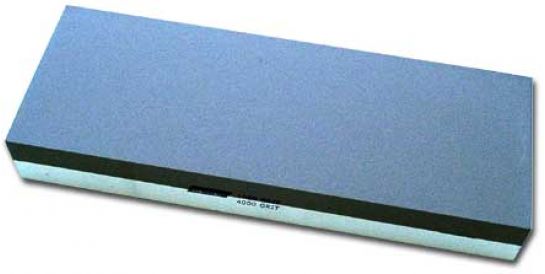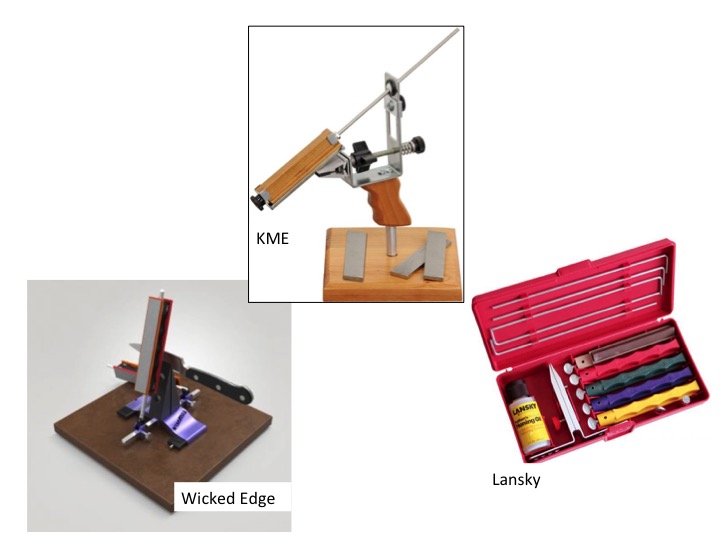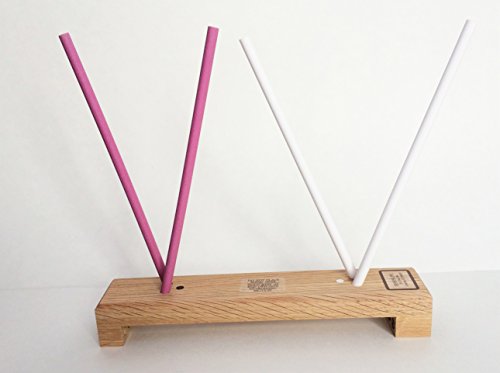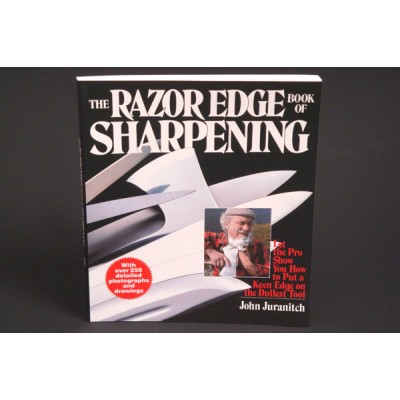So you want to sharpen your own knives/tools?
There's an old joke that if you have a product you can't sell, all you have to do is call it a "knife sharpener" and it will fly off the shelves. I have curated this collection of equipment and resources so you don't have to figure it out by trial and error. For any legitimate sharpening device there is only one critical criterion: keeping a proper and repeatable angle on the edge of the blade. This can be done through design or through skill and practice, but without a proper and repeatable angle, you'll never get a truly sharp blade.
Full Disclosure: I DO NOT receive any compensation or incentives for recommending any of these products or websites.
Do NOT use one of these!
I've obscured the brand to avoid a lawsuit, but lots of companies make these terrible sharpeners.
We've probably all used something like this at some point in our lives, but this is one of the worst kinds of sharpeners you can buy. The carbide "v" removes way too much steel and the edge you get is very poor quality and won't last long. This kind of sharpener will wear out your knives long before their time.
Old-School Cool
Just like the cavemen used to use
Of course, the only thing you really need to sharpen a blade is a rock. And the traditional bench stone is just a fancy rock. Unlike the systems shown above, a bench stone takes a LOT of skill and many hours of practice to master. Not for the faint-hearted, but you'll really learn about how to shape an edge if you're willing to put in the time and effort to learn. Of course, a stone will only sharpen steels that are softer than the stone itself, which means that all ceramic blades and some modern super-hard steels can't be sharpened on a stone.
Other options
These are the best guided sharpening systems available, in my opinion: The KME, Wicked Edge, and Lansky systems, all of which have a guide designed to help you maintain the proper angle on the blade as you sharpen it. They are more expensive, but don't require as much skill to use.
Harder than steel or ceramic
Modern update to the bench stone: the diamond lapping plate
Besides the inability to sharpen super-hard steels and ceramics, another big issue with stones is loss of flatness. Neither of those are a problem with a diamond lapping plate like this one from DMT. It's a lot more expensive, but it will sharpen any kind of steel or ceramic, and the surface will stay flat. However, using a diamond plate takes the same degree of skill and practice that any bench stone requires.
Best-value Sharpening System
This is really the only system you need (from Idahone.com)
The Idahone v-type ceramic rod sharpener is a classic that has been produced in Bailey, Colorado since the 1970's. Simple, rugged, USA-made quality. Sure, it takes some skill and practice, but for about $40, you won't get a better edge from any system.
The Book
The only one you need
I have read many, many books, blogs and websites about sharpening. The Razor Edge Book of Sharpening is the only one you need. Seriously, you'll find books that are more comprehensive, better-written, or with more technical data, but you won't find a book with more practical, applied knowledge than this one. John Juranich covers how to sharpen just about anything with an edge, from knives to axes to ice-augers. Simple, no-nonsense, practical advice that anyone at any experience level can benefit from.






